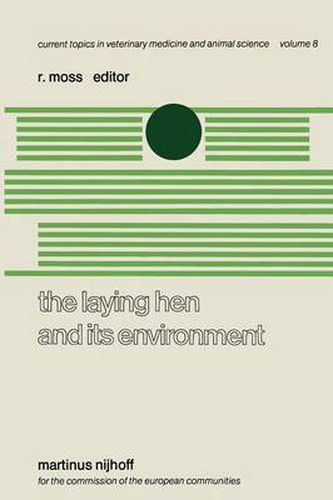Readings Newsletter
Become a Readings Member to make your shopping experience even easier.
Sign in or sign up for free!
You’re not far away from qualifying for FREE standard shipping within Australia
You’ve qualified for FREE standard shipping within Australia
The cart is loading…






This title is printed to order. This book may have been self-published. If so, we cannot guarantee the quality of the content. In the main most books will have gone through the editing process however some may not. We therefore suggest that you be aware of this before ordering this book. If in doubt check either the author or publisher’s details as we are unable to accept any returns unless they are faulty. Please contact us if you have any questions.
The welfare of domestic poultry. particularly those kept under intensive housing conditions is a subject ~n which many. often divergent and conflicting views. are held. This divergence, may be the result either of insufficient knowledge of the facts of particular poultry husbandry systems or a differing interpretation of those facts. With regard to poultry and the laying hen in particular. there is a need to gather together a basic knowledge of avian behaviour in all the circumstances and systems of husbandry under which birds are presently being kept. That knowledge should lead to the development of interpretative and hopefully predictive theories which in turn will allow us to meet the recommendations of Article 3 of the Council of Europe Convention on the Protection of Animals Kept for Farming Purposes: ‘that animals shall be housed, provided with food. water and care in a manner which - having regard to their species and to their degree of development. adaptation and domestication - is appropriate to their physiological and ethological needs in accordance with established experience and scientific knowledge’. In furtherance of those objectives a small group of specialists in poultry physiology and ethology. both from within and outside the European Community met by invitation of the Commission in Luxembourg between 11 and 13 March 1980. Their objective was to discuss what is already known. and can be agreed on. of the normal physiology and ethological range of the laying hen.
$9.00 standard shipping within Australia
FREE standard shipping within Australia for orders over $100.00
Express & International shipping calculated at checkout
This title is printed to order. This book may have been self-published. If so, we cannot guarantee the quality of the content. In the main most books will have gone through the editing process however some may not. We therefore suggest that you be aware of this before ordering this book. If in doubt check either the author or publisher’s details as we are unable to accept any returns unless they are faulty. Please contact us if you have any questions.
The welfare of domestic poultry. particularly those kept under intensive housing conditions is a subject ~n which many. often divergent and conflicting views. are held. This divergence, may be the result either of insufficient knowledge of the facts of particular poultry husbandry systems or a differing interpretation of those facts. With regard to poultry and the laying hen in particular. there is a need to gather together a basic knowledge of avian behaviour in all the circumstances and systems of husbandry under which birds are presently being kept. That knowledge should lead to the development of interpretative and hopefully predictive theories which in turn will allow us to meet the recommendations of Article 3 of the Council of Europe Convention on the Protection of Animals Kept for Farming Purposes: ‘that animals shall be housed, provided with food. water and care in a manner which - having regard to their species and to their degree of development. adaptation and domestication - is appropriate to their physiological and ethological needs in accordance with established experience and scientific knowledge’. In furtherance of those objectives a small group of specialists in poultry physiology and ethology. both from within and outside the European Community met by invitation of the Commission in Luxembourg between 11 and 13 March 1980. Their objective was to discuss what is already known. and can be agreed on. of the normal physiology and ethological range of the laying hen.